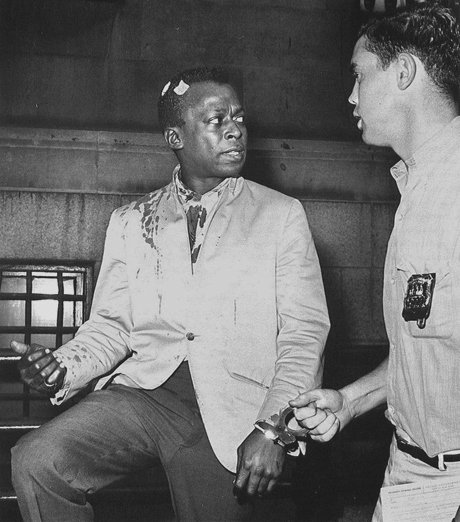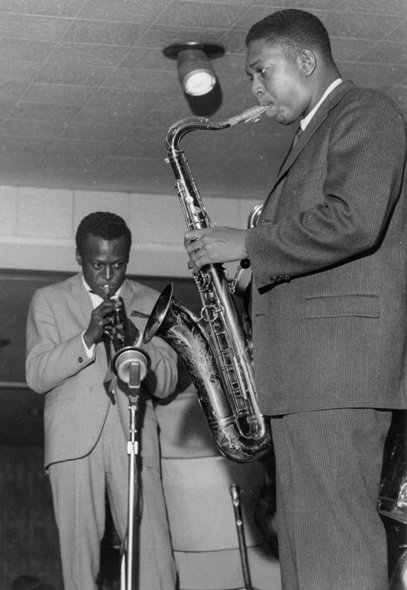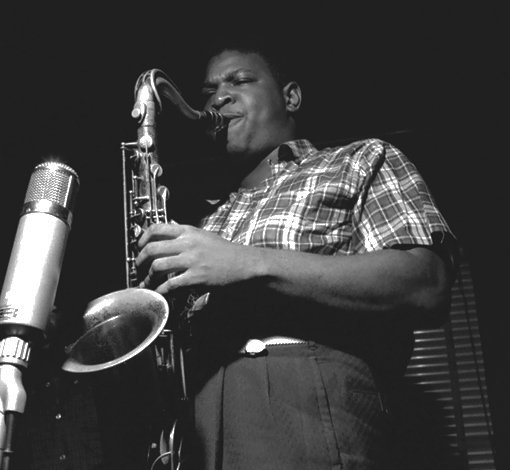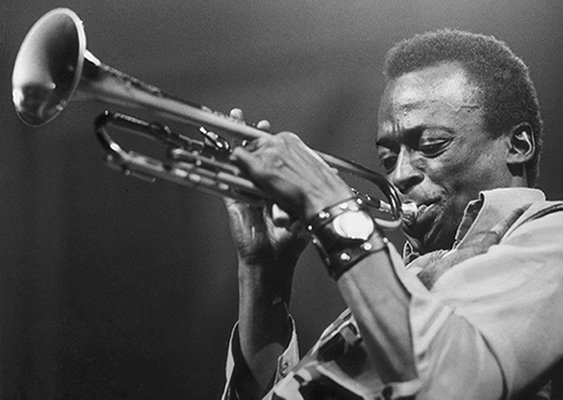Wayne Shorter (saxo tenor), Miles Davis (trompeta), Herbie Hancock (piano), Ron Carter (contrabajo) y Tony Williams (batería). Extraído del álbum Sorcerer (1967) de Miles Davis.
En 1960 Miles Davis grabó otro álbum con Gill Evans titulado Sketches of Spain con música tradicional española, una excelente adaptación del Concierto de Aranjuez de Joaquín Rodrigo y composiciones originales. Una noche, Davis estaba tocando en el club Birldand y salió a la calle a descansar. Entonces, un policía le dijo que se marchara y Davis le contestó que estaba trabajando en el club y que no se podía ir. El policía lo arrestó y le pegó con la porra en el estómago, y un detective le golpeó en la cabeza. Luego lo llevaron a la cárcel, le pusieron cinco puntos de sutura en la cabeza y tuvo que pagar una fianza para poder salir. Finalmente lo absolvieron de todos los cargos que se le imputaban. Después de este incidente, tras atravesar un buen período en su vida personal y profesional, el mundo no volvió a ser el mismo para él. Davis hizo una gira con su sexteto y tuvo que convencer a Coltrane para que lo acompañara a una última gira por Europa en 1960. Después, Coltrane se marchó para formar su propio cuarteto.
In 1960 Miles Davis recorded another album with Gill Evans entitled Sketches of Spain with traditional Spanish music, an excellent adaptation of the Concierto de Aranjuez by Joaquín Rodrigo and original compositions. One night, Davis was playing at the Birldand club and went out on the street to rest. Then a policeman told him to leave and Davis replied that he was working at the club and that he couldn’t leave. The police arrested him and beat him with the truncheon in the stomach, and a detective hit him on the head. Then they took him to jail, put five stitches in his head, and he had to pay a bail to be able to leave. He was finally acquitted of all charges against him. After this incident, having going through a good period in his personal and professional life, the world was never the same for him. Davis toured with his sextet and had to convince Coltrane to join him on a final European tour in 1960. Afterwards, Coltrane left to set up his own quartet.


En 1963 Davis aumentó su consumo de alcohol y cocaína para reducir el dolor articular causado por una anemia drepanocítica genética que padecía. Ese mismo año formó un quinteto con George Coleman al saxofón tenor, Victor Felman al piano, Ron Carter al contrabajo y Frank Butler a la batería con el que grabó tres álbums en directo interpretando los mismos estándares de bebop que había tocado con bandas anteriores, pero los trataba con libertad estructural y rítmica, y en ocasiones a una velocidad vertiginosa. También grabaron cinco temas del álbum Seven Steps to Heaven, pero Davis sustituyó a Felman por Herbie Hancock y a Butler por Tony Williams para grabar los tres restantes. En 1964, Davis reemplazó a Coleman por Sam Rivers hasta que convenció a Wayne Shorter para que abandonara el grupo del batería Art Blakey y se uniera a él. Este es el segundo gran quinteto de Davis que se mantuvo activo desde 1964 hasta 1968 y que tanto ha influido en décadas posteriores.
In 1963 Davis increased his use of alcohol and cocaine to reduce joint pain caused by the genetic sickle-cell anemia he suffered from. That same year he formed a quintet with George Coleman on tenor saxophone, Victor Felman on piano, Ron Carter on double bass and Frank Butler on drums with whom he recorded three live albums performing the same bebop standards he had played with previous bands, but he treated them with structural and rhythmic freedom, and sometimes at a breathtaking speed. They also recorded five tracks from the album Seven Steps to Heaven, but Davis substituted Felman for Herbie Hancock and Butler for Tony Williams to record the remaining three. In 1964 Davis replaced Coleman with Sam Rivers until he convinced Wayne Shorter to leave drummer Art Blakey’s group and join him. This is the Davis’s Second Great Quintet that remained active from 1964 to 1968 and has influenced so much in later decades.

Hancock y Carter hacen una corta introducción y enseguida entran Davis y luego Shorter para exponer el tema al unísono a tiempo medio lento. Primero Davis toca midiendo cada nota esbozando un solo moderado y sobrio. Le sigue Shorter con un discurso más continuo mostrando sus recursos estilísticos. A continuación Shorter y Davis vuelven a tocar el tema para dar paso a Hancock, que presenta una línea melódica frugal y ligera, y el grupo reexpone el tema.
Hancock and Carter make a short introduction and soon Davis and then Shorter come in to expose the theme in unison at medium-slow tempo. First Davis plays measuring each note outlining a moderate and sober solo. Shorter follows him with a more continuous improvisation showing his stylistic resources. Shorter and Davis then return to play the theme again to give way to Hancock, who presents a frugal and light melodic line, and the group re-exposes the theme.

Translated with the help of DeepL
℗ Columbia Records


Si te ha gustado el tema, quizá querrás escuchar también los anteriores de este álbum:
If you liked the track, you might also want to listen to the previous ones on this album:

